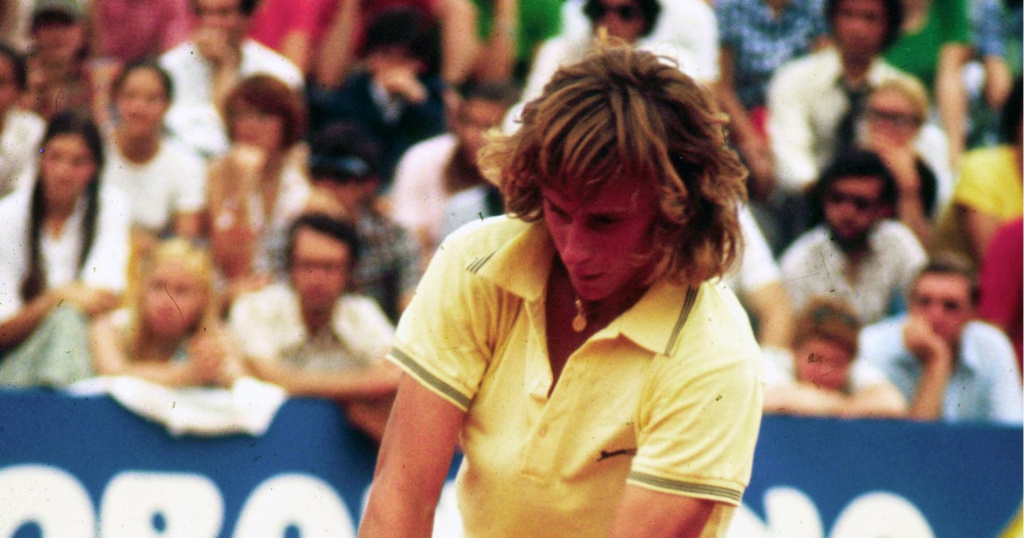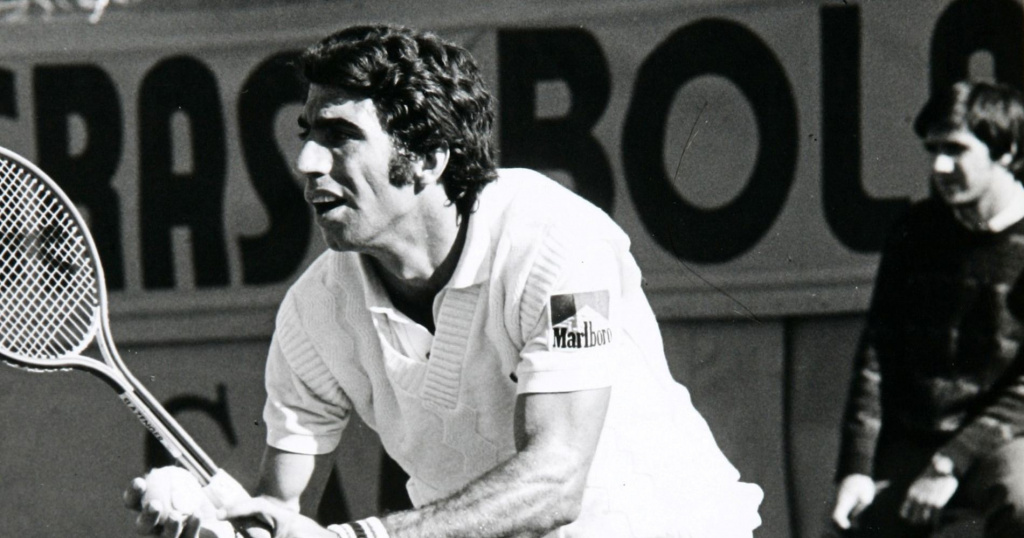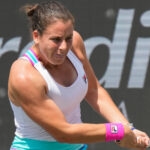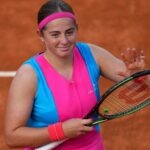June 16, 1974: The day an 18-year old Bjorn Borg won the first of his six French Open titles
Every day, Tennis Majors takes you back in time to relive a tennis event which happened on this specific day. On June 16, 1974, Bjorn Borg won his first major title, claiming the French Open trophy at only 18 years old. The beginning of a successful journey.
 Bjorn Borg, On this day 6/16
Bjorn Borg, On this day 6/16
What happened exactly on that day
On this day, June 16, 1974, 18-year-old Bjorn Borg, from Sweden, claimed his first Roland-Garros title. Youngest player to ever win the tournament, he came back from two sets down to edge Manuel Orantes in the final (2-6 6-7 6-0 6-1 6-1). This was the first page of Borg’s legend, and the first of 11 major titles conquered between 1974 and 1981. The Swede would become the first tennis “rockstar”, more popular than any tennis player, and the “Borgmania” would take tennis popularity as a sport to a different level.
The people involved
Bjorn Borg, tennis rising star
Bjorn Borg, born in 1956, started playing tennis at nine years old. By the age of 15, he was already a member of the Swedish Davis Cup team and for his first appearance in the competition, he won his singles match against New Zealander Onny Parun. He turned professional the next year, in 1973, before even turning 17, and soon he reached the final in Monte-Carlo, where he was defeated by Ilie Nastase (6-4 6-1 6-2). For his first appearance at Roland-Garros, he reached the fourth round, beaten by Adriano Panatta (7-6 2-6 7-5 7-6).

In January 1974, he claimed his first title in Auckland. It was followed by three other titles such as London and Sao Paulo (both WTC events), and eventually, the most important one, in Rome, where he edged Ilie Nastase in the final (6-3 6-4 6-2). After this win at the Italian Open, he was seeded No 3 at the French Open and, despite his young age, he was now considered as a serious contender for the crown. His game style , which involved a lot of topspin and a two-handed backhand, was revolutionary and would be copied all around the world.
Manuel Orantes, more than a clay specialist
Manuel Orantes, from Spain, was born in 1949. Left-handed, his peak year on the tour was 1972, when he claimed three consecutive titles on clay (including his most important title so far, in Rome) before he reached the semi-final at both Roland-Garros (defeated by Patrick Proisy, 6-3 7-5 6-2) and Wimbledon (beaten by Ilie Nastase, 6-3 6-4 6-4). Before the 1974 French Open, ha had claimed a total of 14 titles in his career.

The place: Roland-Garros
The story took place in Roland-Garros, Paris. The stadium, located in the west of Paris at the edge of the Bois de Boulogne forest, had been hosting the French Open since 1928. It was the first and now the only Grand Slam to be played on clay, the slowest surface, which made it the hardest tournament to win from a physical perspective.
The facts: Borg storms back for victory
In 1974, Bjorn Borg was competing in the Roland-Garros main draw, where he was the youngest player, for the second time. Since his triumph in Rome, he was considered as one of the favorites at the French Open. On his way to the final, he had shown a lot of self-control to survive two five-set battles, one in the fourth round against Erik van Dillen (0-6 6-3 6-3 5-7 6-3), the second in the quarter-finals against Raul Ramirez (6-2 5-7 4-6 6-2 6-3).
Manuel Orantes had more experience. The 27-year old, on his way to the final, defeated Argentinian rising star Guillermo Vilas (3-6 3-6 7-6 6-3 6-2), and world no 6 Arthur Ashe in the fourth round (6-1 6-2 6-2). Borg and Orantes had faced each other five times already, and after Orantes had edged Borg without losing a set in their three first encounters. Borg had prevailed in their two last matches.
None of the players had participated in a Grand Slam final before. At start, it seemed like Orantes’ experience was paying off. While he was still fresh, his elegant technique and his exquisite touch helped him outplaying a defensive Borg. The Spaniard took the first set, 6-2. Running around the Swede with his wonderful backhand, Orantes continued cruising towards victory until he was up 4-1 in the second set. Borg’s shots then gained in depth and spin, and he managed to even the score and obtain a set point at 5-4. Although Orantes saved it and sealed a two-set lead by claiming the tiebreak 7-4, he could not prevent Borg from brutally reversing the scenario. Exhausted by Borg’s consistency, kept at bay by his opponent’s heavy topspin, Orantes collapsed and lost the three next sets, 6-0 6-1 6-1. The Spaniard, totally worn out, only scored four points in the last five games. Borg had just become the youngest player to ever win Roland-Garros. A legend was born.
What next: Borg dominates men’s tennis
Manuel Orantes would reach another Grand Slam final in 1975, at the US Open. This time, at Forest Hills, he would edge world no.1 Jimmy Connors (6-4 6-3 6-3) to lift the only major trophy of his career. Manuel Orantes would claim the last of his 33 titles in April 1982 in Bournemouth.
Bjorn Borg would become the greatest tennis star of his days. In total, he would claim 11 Grand Slam titles between 1974 and 1981: he would triumph six times at Roland-Garros (1974, 1975, 1978, 1979, 1980, 1981) and five consecutive times at Wimbledon (1876-1980). His cold-blooded attitude would gain him the nickname of “Ice Borg”, and his baseline game would inspire thousands of tennis players around the world. The constant attention and pressure would eventually make him burn out and quit professional tennis in 1981, at the age of 26, having already won 64 tournaments and held the world No 1 spot for 109 weeks. He would try an unsuccessful comeback with his wooden racket in the early 1990s. Borg and Orantes would face each other 16 times in total, with a 12-4 record in favour of the Swede.







